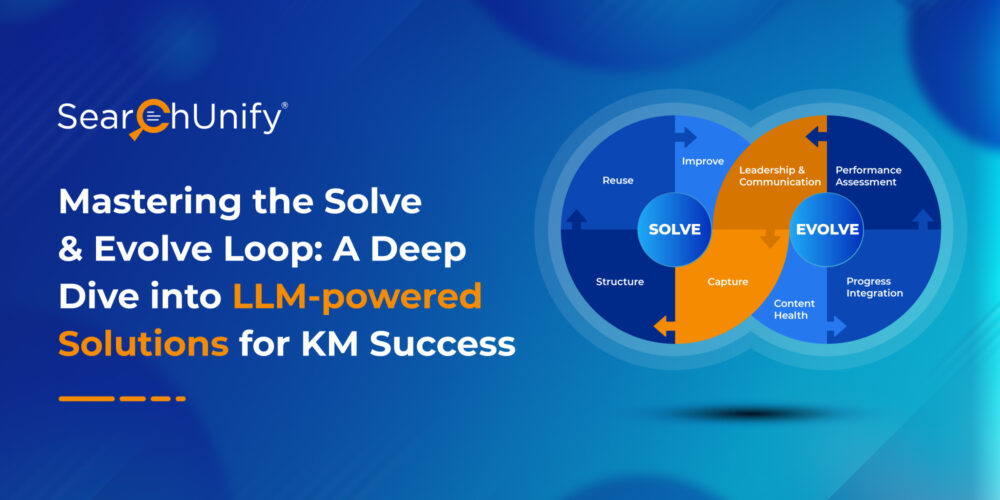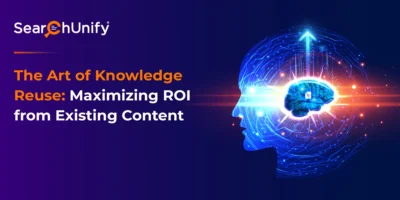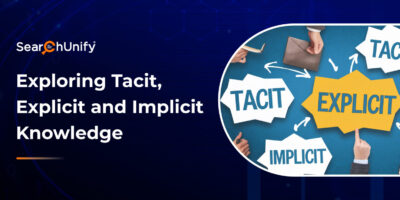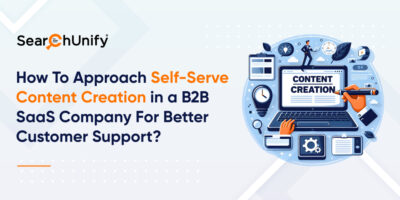
Ever feel like you’re drowning in documentation? You’re not alone. The average employee spends a whopping 2.8 hours a week just writing stuff down, and then even more time hunting for that information in the company database. Talk about frustrating!
Here’s the thing: knowledge is power, especially in the business world. That’s why Knowledge-centered service (KCS) is such a game-changer. It’s all about continuously creating and updating knowledge to solve problems and build a dynamic knowledge base (KB).
But even with KCS, support heroes often face a roadblock in the Solve and Evolve Loop: they don’t always prioritize creating new cases for the KB because their focus is on resolving customer issues.
That’s where generative AI (GenAI) steps in. It streamlines knowledge management by generating high-quality content and making knowledge creation a breeze.
Intrigued? Let’s delve deeper into the challenges and how GenAI can help!
First Things First—What is the Solve & Evolve Loop?

Before we explore how GenAI can revolutionize KCS, let’s get familiar with the Solve & Evolve Loop: the powerhouse behind your ever-evolving knowledge base.
This loop isn’t just about solving problems; it’s about continuously learning and adapting. Think of it as a two-part system:
- The Solve: This stage focuses on actively identifying and addressing issues, like those you encounter in daily customer interactions. It involves analyzing support tickets, knowledge transactions, and identifying areas for improvement.
- The Evolve: Here’s where things get strategic. This stage dives into leadership and organizational strategies, utilizing insights to build and maintain a healthy and thriving knowledge base.
However, even the most enthusiastic support agents can face roadblocks within this loop.
Challenges of the Solve & Evolve Loop
Some obstacles within the solve and evolve loop are:
1. Capturing Customer Context
Gaining a comprehensive understanding of the customer’s context remains a significant challenge while documenting resolutions. It is crucial to effectively capture and incorporate customer-specific details for providing targeted and relevant solutions.
2. Finding the Existing Answers
Encouraging support professionals to adopt a proactive approach in searching for existing knowledge timely and consistently is quite the task. Yet, it is essential to avoid redundancy and streamline the resolution process.
3. Ensuring Content Uniqueness
It is a hassle for organizations to be on the constant lookout for duplicate KB articles and verify whether they are unique or already exist. Instead of wasting time searching and identifying, support agents should utilize their efforts for other priority tasks.
4. Transitioning from Spreadsheets to a Centralized Dashboard
Encouraging your employees to step out of the spreadsheets and onto a centralized dashboard for CSC (Coaching, Support, and Collaboration) and PAR (Problem Analysis and Resolution) activities poses a challenge. This is due to resistance to change, potential training needs, and the need for robust technology to facilitate a seamless integration process.
5. Measuring What Matters
A part of the solve loop is identifying the impact made by knowledge workers, allowing them to work on it to achieve perfection. However, implementing recognition programs becomes challenging when it’s hard to demonstrate the outcome of their contributions, often due to the lack of established metrics.
While these are some challenges you’re likely to encounter while implementing the solve and evolve loop, GenAI integration can help counteract them. Let’s see how.
How GenAI and LLMs Boost the Solve & Evolve Loop
Large Language Models are revolutionizing the way organizations approach Knowledge Management (KM). They significantly boost the Solve & Evolve Loop, a continuous cycle of identifying and improving your knowledge base. Let’s explore how LLMs empower each stage:
Supercharging the Solve Loop
1. Identifying the Problems: The first step of the loop is identifying problems within your knowledge workflows. LLMs can help here by analyzing and highlighting inconsistencies, gaps, and outdated information within large datasets. This enables focused efforts in effective knowledge curation and maintenance.
2. Generating Solutions: Once LLMs have analyzed the knowledge gaps, they can propose contextually relevant and diverse solutions to specific problems.
3. Feedback Incorporation: LLMs enhance feedback incorporation by iteratively learning from user input, adjusting responses based on received feedback, and dynamically adapting to user preferences, thus fostering an interactive and evolving interaction process.
Elevating the Evolve Loop
1. Facilitating Data Extraction and Analysis: Acing KM requires a lot of data extraction and analysis, followed by manually adding it all to spreadsheets. LLMs can automate all of these functions, ensuring that employees can move to a centralized database without much hassle.
2. Fostering Recognition Programs: Incorporating LLMs into the solve loop helps generate detailed reports that vividly showcase the tangible impact of their contributions, and fostering recognition programs
3. Strategizing for the Future: With accurate detailed analytical reports and impact numbers, LLMs can expertly deduce valuable insights and customer patterns to anticipate future needs and trends. They can provide actionable recommendations, enabling organizations to make informed decisions and stay ahead in the ever-evolving business landscape.
Further, insights can majorly impact the success of the solve and evolve loop. LLM-powered products often provide important analytics that play a crucial role in boosting overall organizational productivity.
How LLM-powered Insights Further Help Amplify the Solve & Evolve Loop

1. Informed Decision-making: Thorough insights provided by LLM-powered products create the base for organizations to make informed decisions for better impact.
2. Performance Evaluation and Optimization: LLMs aid in evaluating organizational strategies and processes, enabling the identification of successful practices and areas that require improvement through insightful analysis.
3. Continuous Improvement: Leveraging LLMs for data analysis enables organizations to identify changing market trends and new opportunities. This helps brands timely adapt strategies based on real-time insights.
4. Customer Satisfaction: LLM-generated insights help understand customer preferences, feedback, and sentiments, enabling organizations to tailor their services accordingly.
Next on the Horizon: What You Need to Ace LLM-powered Knowledge Management
LLMs hold immense potential, yet only 45% of US organizations leverage them for KM (2023 survey). Embracing this technology holds significant opportunities for improvement.
Ready to take the next step? Look no further than Knowbler, an LLM-powered product that empowers your team to effortlessly create, edit, and share knowledge within their workflows.
Learn more: Our webinar, “Shift from Knowledge Creation to Curation with LLMs and Actionable Insights,” delves into Knowbler’s capabilities, amplifying the Solve & Evolve Loop through a live demo and expert insights. Watch the recording and discover how LLMs can propel your KM success!











